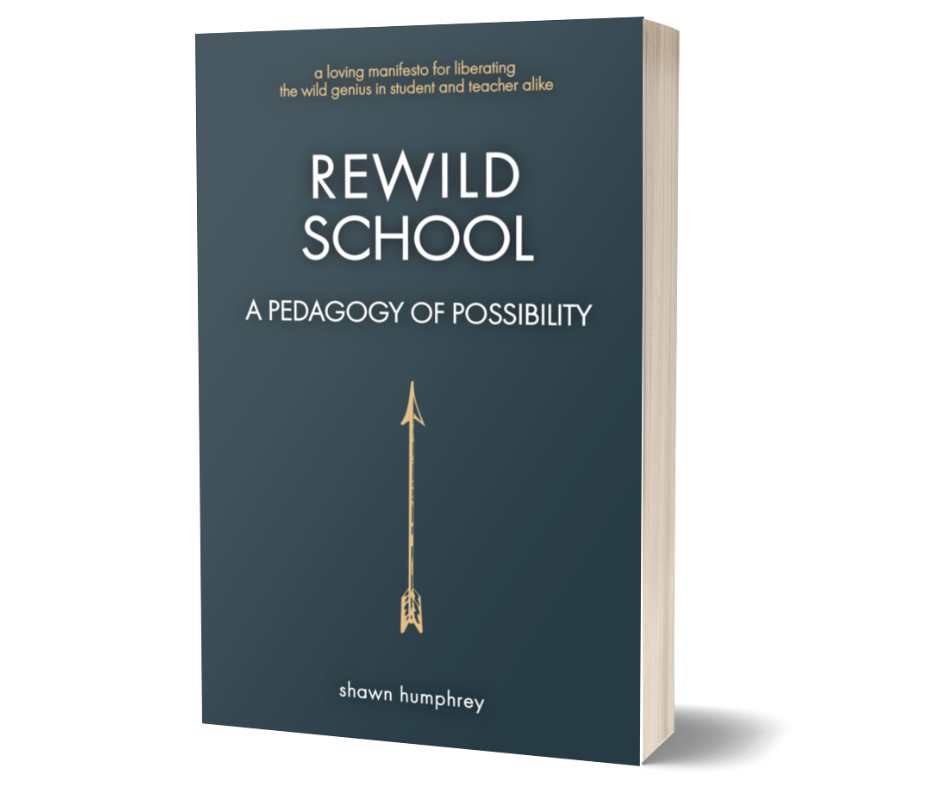The Pedagogy of the Wild
Recently, while hiking the Blue Ridge Mountains and looking up from the trail to check my direction, I noticed a brush mark of blue paint on a tree just ahead of me.
It assured me, “This is the way.”
As I continued my hike, with brush marks of blue encouraging me along the way, I thought to myself, how did the park rangers decide on which color to use for those marks?
They were not hot pink.
Nor fluorescent green.
The blue was not that bright.
Indeed, there was barely any contrast between the blue paint and the trees’ bark.
How did the park rangers decide on the distance between marks?
How did they decide how many marks were just enough to keep hikers on the right path without crowding out their sense of direction?
“Oh,” I thought, “this is the pedagogy of the wild.”
Like the park rangers of Shenandoah National Forest, when rewilding your students, you must strike the right balance between independence and guidance.
You will have to decide on the number and type of check-ins you will have with your students to strike a balance between ensuring they stay true to the journey and giving them enough space to fail and discover the journey on their own.
You must decide how often you will ask your students, “Are you okay?” While this question is comforting, asking it too often can tilt into gaslighting. Think about it: How often can someone be asked, “Are you okay?” before they begin answering that question with “Am I okay?”
For each of your students, you will have to ask yourself repeatedly, “Am I pushing them too far beyond or keeping them too much within their edge of growth?”
Whenever we were in Honduras and our classroom community was reframing a rookie’s choice from “resist or flee their fears” into “us versus them (the student’s fears),” I stared at our rookies with admiration and worry. Was the experience too much? Too intense? Was it too soon for them? In a moment their loved ones back home may have readily rescued them from, I suppressed my instinct to step in and assist them.
“Be patient,” I admonished myself, “this experience is a gift.”
It was. It still is.
Just as the forces of industrialized education relentlessly strive to keep our students from becoming who they were born to be, an equal and opposite force of the same strength and intensity must be counterpoised against them.
That counterpoising force was our classroom community. Our eyes on them. Our only persistent question: Are they one of us? Our collective judgment regarding whether they were or not.
Yet, knowing that too intense of an experience can hinder their growth, I was ethically obligated to ask if the experience was too much, too soon for them.
However, at the same time, if I lowered the intensity of the experience too much, by stepping in, then the experience my students needed to experience would not have been experienced.
You too will be obligated to distinguish between experiences that expand possibilities from those that diminish.
You too will have to calibrate and recalibrate and recalibrate again the intensity of the experience your students experience.
You will have to do this for each of your students in real time.
You are training your students in the ways of the wild. And, that right there is the fundamental paradox of rewilding: the more training you give them the less wild they become.
Teaching your students to embrace their inner wildness while still providing the structure they need to learn and grow requires a deep understanding of oneself, one’s students, and the ecosystem of relationships that make up your classroom community.
Will you allow your students the benefits of getting lost, of trying different routes and having to backtrack, of encountering dead ends but still pressing onward?
Will you put a blue paint mark on every tree? Or, will you put one on every other tree, every third tree, or more?
I don’t have any answers for how to square this circle. I learned to live into this tension.
I do know that we teachers must become critically wary of our education system’s excessive zeal to comfort our students, a zeal that fosters a competitive environment where teachers, in an effort to fulfill their professional obligations, engage in a convenience and caring arms race.
This race pushes us educators to prioritize making our classes more convenient and demonstrating more care for our students than our colleagues; we do this by making our lecture notes readily available, providing helpful guides, clearly articulating what constitutes an A, B, C, D or F, and other ways – at the expense of transformative learning experiences.
I do know that rewilding, as a pedagogy, if practiced with a deep humility and a love for curiosity, has gifts to give our students—and us.
Thanks for reading! – shawn
+++++
Other Posts from the Rewild School Series:

Photo by Clark Wilson on Unsplash

